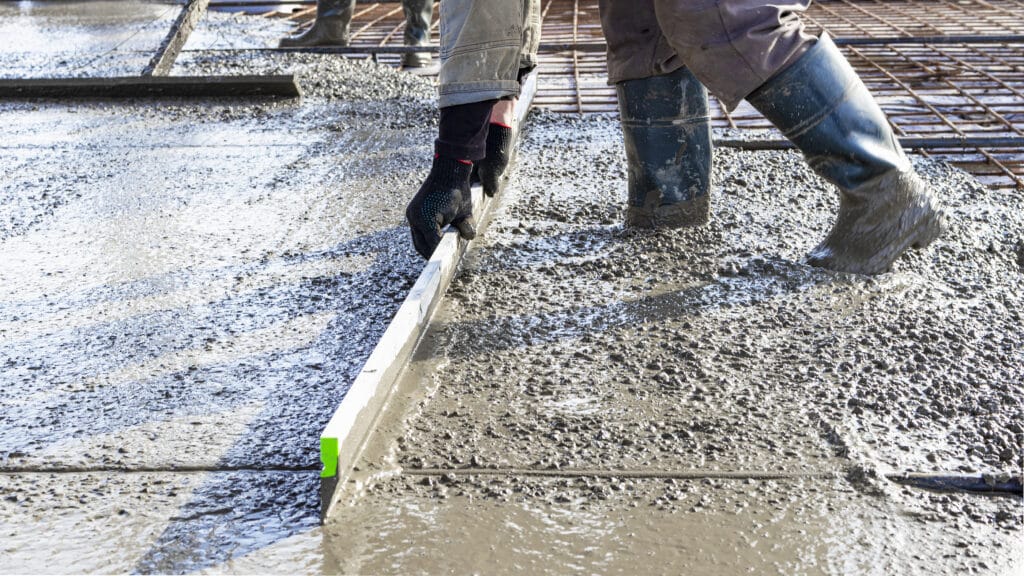Concrete is one of the world’s most commonly used materials, as its strength and durability make it suitable for multiple uses. Yet its plastic properties allow it to remain flexible when fresh mixture is created.
At the core of its extraordinary strength lies a paste made of cement and water that coats aggregates (from fine sand to crushed rocks). When properly created, concrete mixes can achieve amazing strength levels.
Proportioning
Concreting Melbourne is a composite material composed of cement and an assortment of aggregates. The aggregates give concrete its incredible compressive strength while helping it adhere to other surfaces such as stone, steel, or wood.
Cement and water combined create a paste that coats aggregate particles, filling any gaps that exist and making the mixture workable. This process is known as hydration; it creates the chemical reaction responsible for giving concrete its immense strength.
Proper mix proportioning (also referred to as mix design) refers to selecting appropriate amounts of each ingredient to produce concrete that meets specific design requirements. Here at CP Tech Center we have assembled resources on how you can do just this.
Mixing
Concrete can be found everywhere from backyard barbeques to some of the world’s tallest buildings and longest bridges, made up of just three ingredients – cement, coarse aggregates and water. No matter its use or form it takes on, however.
Concrete mixes can be made by hand or using a portable mixer and transported directly to their job sites for mixing. While in transit, the portable mixer’s drum must rotate at an agitating speed to ensure that the concrete has been thoroughly mixed.
Admixtures are substances added to concrete in order to enhance certain properties, such as strength or deicing resistance. Air entraining agents add small bubbles which increase strength; deicing agents prevent freezing and thawing; while accelerators speed curing.
Hydrating
Concrete is an indispensable material, used worldwide due to its strength and resilience. Poured into forms for structures, it then slowly dries over weeks until reaching peak strength.
Hydration, the chemical reaction between cement and water to form strong bonds that give concrete its strength, is what allows a single square inch of concrete to hold 3,000 pounds! Hydration makes concrete so strong!
As part of the hydration process, heat is generated as chemical bonds break and form. At stage I of this heat production cycle, rapid heat release occurs quickly enough that concrete remains plastic enough to be transported and placed easily.
Placement
Concrete is an extremely versatile material that can be molded and shaped into structures of all shapes and sizes, while being both cost effective and durable. When working with concrete it is crucial that its handling and placement are handled correctly to avoid problems later.
In order to produce concrete, portland cement and water are combined into a paste that covers aggregate (small stones, sand or gravel) with chemical reactions known as hydration and bonds them together through chemical processes known as hydration. The mixture can then be hand poured, pumped up the line, sprayed on or grouted into various building materials for use on site.
Proper handling during concrete installation will help minimize segregation and regulate moisture content. Concrete may be central-mixed, ready-mixed or truck-mixed depending on preference; central mixing eliminates massive storage needs on site while guaranteeing all ingredients are mixed properly.
Curing
Concrete is an exceptionally resilient material, but it takes time to reach its maximum strength. That is where curing comes into play.
Curing is the process of providing concrete with the moisture and temperature conditions it needs for proper hydration, leading to its development of engineering properties for which it was designed. Over 90% of its final strength typically is achieved during this stage.
To achieve successful curing, a waterproof covering must be placed over the concrete surface in order to stop moisture evaporation from the mix. Common covers include water-resistant building papers or plastic films like polyethylene sheeting. Hessian, burlap, or wet sand may also be employed; cracking may otherwise ensue during this stage.
